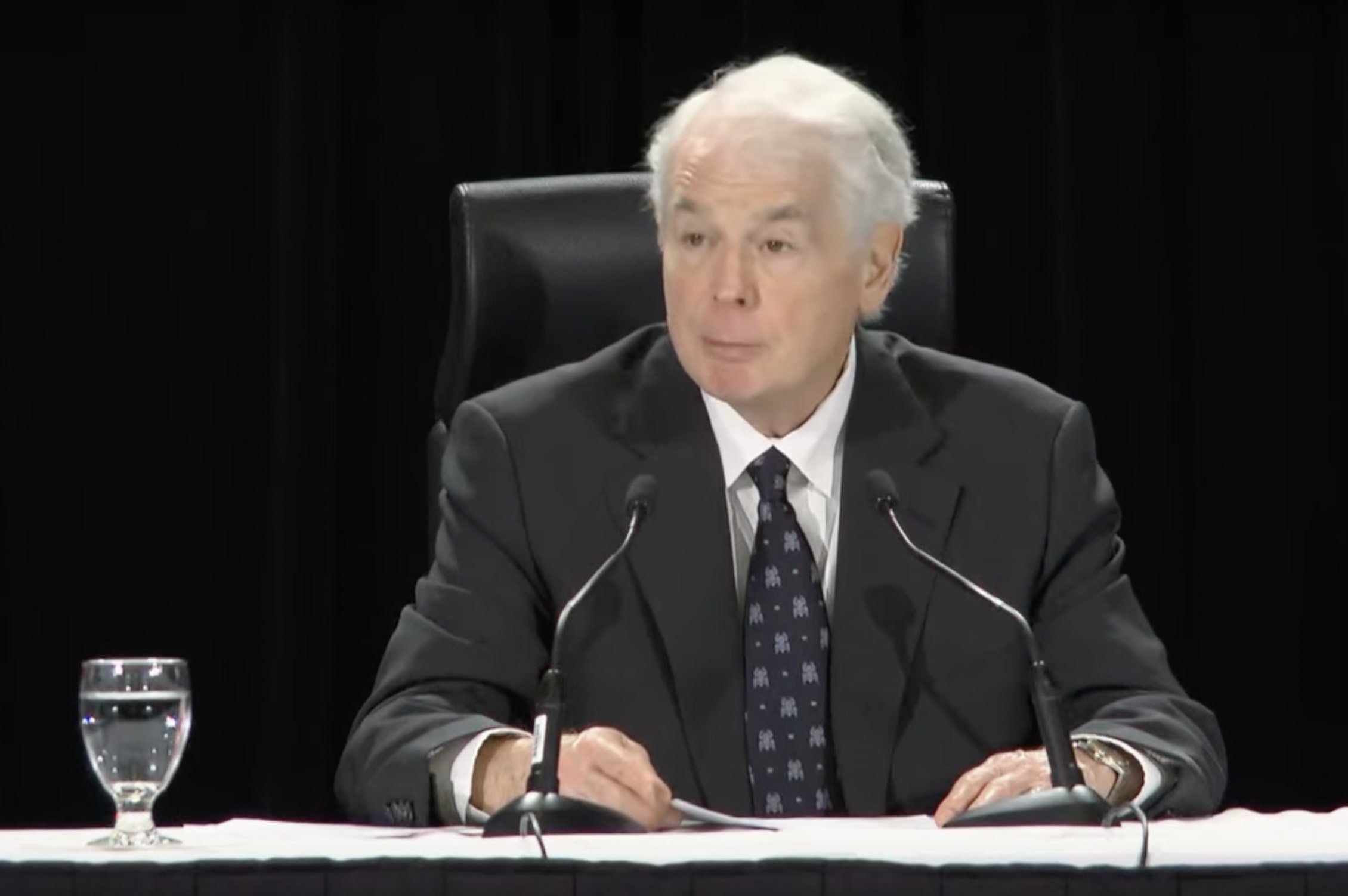OTTAWA – Public Order Emergency Commissioner Paul Rouleau says the federal government did in fact meet the “very high” threshold required to invoke the Emergencies Act last winter in response to “Freedom Convoy” protests in downtown Ottawa.
“Lawful protest descended into lawlessness, culminating in a national emergency,” the judge wrote in his report.
Tabled on Feb. 17 in the House of Commons, the report is required as an intentional layer of accountability within the Emergencies Act.
Rouleau, in his 200-page executive summary, stated the protest evolved into an “occupation,” which he said was unfortunate and likely could have been avoided.
However, he also noted the government was justified in its actions to counter a failure in policing and in “federalism.”
The convoy
The “Freedom Convoy” brought thousands of people to Parliament Hill, starting the weekend of Jan. 28-30, 2022.
It originally started as a protest against the federal government’s announcement that Canadian truckers wanting to cross the border from the United States would need to be vaccinated against COVID-19 in order to avoid a 14-day quarantine.
However, along the way it turned into a fight against many other COVID-19 public health measures and vaccine mandates.
While the pandemic was the main impetus for the convoy, Rouleau said the protests also likely had roots pre-dating the pandemic, including a rise in populism over the last decade or so, often fueled by “economic marginalization.”
The commissioner also cited the role played by social anxieties, erosion of trust in public institutions and the “pervasive” influence of online misinformation/disinformation.
“Evidence from many of the convoy organizers and participants demonstrated a range of views that I have no difficulty characterizing as being based on misinformation,” Rouleau stated in his report.
“Some views were outright conspiratorial.”
He also noted “the prevalence of misinformation and disinformation diminished the prospect of productive discussions” between protesters and the government.
The act
On Feb. 14, 2022, Prime Minister Justin Trudeau invoked the Emergencies Act to end the protests, which had blocked streets in downtown Ottawa for weeks.
It was the first time the law was used since its passing in 1988.
Invocation by the federal government granted law enforcement officials extraordinary powers to remove and arrest protesters.
It also gave the government power to freeze finances of individuals connected to the convoy and provided the authority to compel tow truck operators to remove protesters’ vehicles from Ottawa streets.
The Emergencies Act defines a national emergency as one that “cannot be effectively dealt with under any other law of Canada” – and it specifies there must be “a threat to the security of Canada.”
The report
“In my view, there was credible and compelling information supporting a reasonable belief that the definition of a threat to the security of Canada was met,” Rouleau stated in his report. “I have concluded that cabinet was reasonably concerned that the situation it was facing was worsening and at risk of becoming dangerous and unmanageable.”
The report relied on weeks of testimony from over 70 witnesses, ranging from protesters to cabinet members, as part of last fall’s Public Order Emergency Commission.
It cites a number of missteps by local and provincial police forces, noting Premier Doug Ford and other Ontario officials failed “to rise above politics and collaborate for the common good.”
Rouleau makes 56 recommendations in his report to improve police responses and intelligence sharing and to refine the Emergencies Act.
Peaceful protest?
The commissioner rejected the descriptions of convoy organizers and participants who claim the protests in Ottawa were “lawful, calm, peaceful or something resembling a celebration.”
Instead, Rouleau wrote, “The bigger picture reveals that the situation in Ottawa was unsafe and chaotic.”
However, he also chastised Trudeau for inflaming the situation with comments that referred to protesters negatively, including calling them a “fringe minority.”
Rouleau stressed several times the situation could have been avoided with better cooperation amongst law enforcement and government officials at all levels.
To read the commissioner’s full report visit publicorderemergencycommission.ca/final-report.



